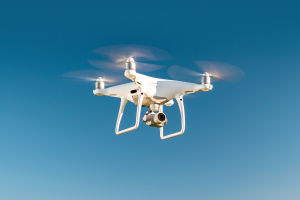Have you ever wondered why satellite dishes are so massive? Today, let's explore the world behind these giant "sky eyes" together.
You’ll see it’s not just about size — it's about how we stay connected across the vastness of space!
The Ripple Effect: A Simple Starting Point
Let’s start with something we’ve all seen — ripples on a still lake. When we throw a stone into calm water, ripples spread out from the splash point. Close to the center, the ripples are strong and large, but as they move outward, they get smaller and weaker. Eventually, they disappear from our sight.
This tells us something important: energy (or signal strength) gets weaker the further it travels. The nearby ripples have lots of energy packed into a small area, but as the ripples spread, that energy stretches thinner and thinner across a bigger space.
From Water to Space: How Signals Travel
Now, let's leap from water to space. Satellites orbit the Earth hundreds or even tens of thousands of miles away — sometimes as far as 36,000 kilometers! When they send signals down to us, it's not like flat ripples on a lake anymore. Instead, the signals spread out in three dimensions, forming an expanding sphere.
The surface area of that sphere grows fast — much faster than a flat circle. The same energy now covers a much larger area, meaning the signal weakens at a shocking rate. In fact, the strength of the signal drops with the square of the distance. That’s a fancy way of saying that when the distance doubles, the signal becomes four times weaker!
Why Not Just Blast Stronger Signals?
You might think, "Why not just send super powerful signals from satellites?" Well, we do try, but there's a limit to how much power a satellite can generate. Plus, blasting massive signals constantly would drain resources fast and might interfere with other communications.
It’s like throwing stones into a lake. A bigger stone makes bigger ripples that travel farther. But throwing giant stones over and over again is exhausting! Instead of only increasing signal strength, we need a smarter way to catch those faint signals better.
The Secret Weapon: Giant Dishes
Here's where those enormous satellite dishes come in. Think of them like a giant microscope, carefully focusing and collecting the faint signals from space.
A small antenna is like using our bare eyes to look at tiny ripples far away — it’s nearly impossible to see anything. But a large dish can "zoom in" and pick up even the faintest movements, just like a microscope helps us see tiny details we would normally miss.
Big dishes have a narrower focus but a much higher sensitivity, which means they can detect weak signals that smaller antennas would totally miss. In contrast, small antennas cover a wider area but are terrible at focusing and picking up tiny signals.
Visualizing the Difference: Small vs. Big Antennas
Imagine two different setups:
1. A small antenna "sees" a wide chunk of the sky but with very poor detail. It’s like looking at the whole lake at once but not being able to notice the small ripples.
2. A huge satellite dish "sees" a very tiny patch of the sky — but with incredible precision. It’s like zooming in on a single ripple and catching every little movement.
- This is why large dishes are crucial: they zero in on the narrow beam of satellite signals, capturing enough information for our TVs, phones, GPS, and more to work seamlessly.
Giant Dishes: The Ultimate Signal Catchers
So, why are satellite dishes so big? It's simple. Bigger dishes mean better focus and greater ability to pick up faint, faraway signals. Without them, we would lose much of the communication magic that keeps our world connected — from live sports broadcasts to critical weather updates.
Giant satellite dishes are like heroes standing quietly on mountaintops, deserts, or fields, catching whispers from the stars that we otherwise would never hear.
Let's Keep Exploring the Hidden Wonders!
Next time you spot a giant satellite dish gazing into the sky, remember — it's a mighty tool connecting our world in ways we often don't see. What other hidden marvels are waiting for us to discover? Let’s keep the curiosity alive, Lykkers!
Antenna Types for Satellite Communication: A Quick Guide
Video by Sniper Network


